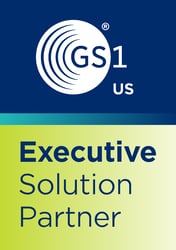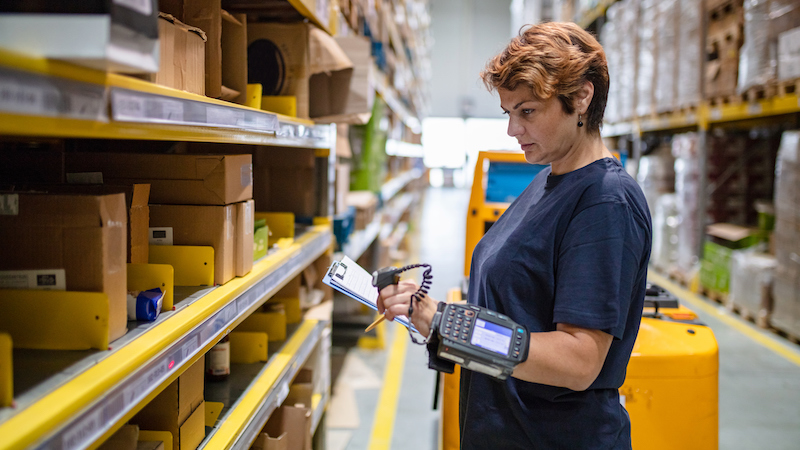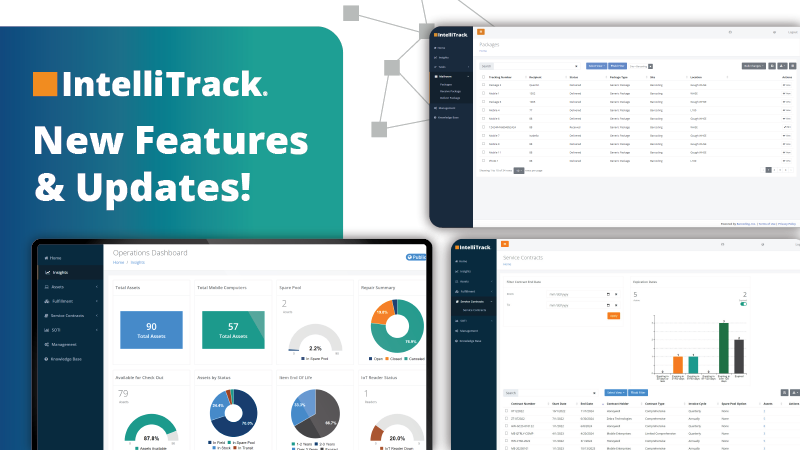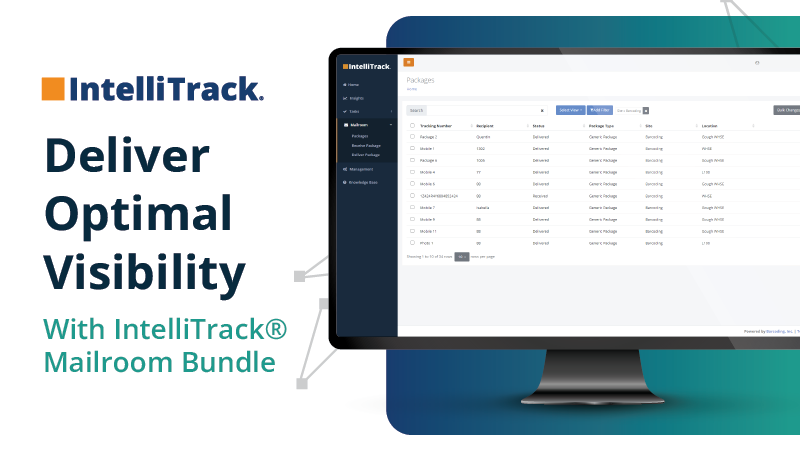Radio frequency identification (RFID) has been around for decades, but its moment in retail has certainly arrived in the wake of pandemic and supply chain changes. As stores play a significant and growing role in omnichannel distribution, retailers need to know what they have, and where they have it.
According to Auburn University RFID Lab, typical retail stores’ inventory accuracies hover between 51% and 65%. That translates to not knowing where an item is—or if it’s even in stock—a third of the time.
With the rise in ecommerce and buy-online-and-pick-up-in-store (BOPIS) options, many consumers are no longer willing to accept the hassle, time, or cost of going from store to store. Now, shopping around for price comparisons, availability, and delivery options takes place online, and store locations play an important role in omnichannel fulfillment strategies. To live up to their promises of same-day or next-day availability, retailers simply have to improve inventory management and tracking.
At the same time, the falling cost of RFID tags makes the technology more affordable for retailers and suppliers. That’s very good news, since some of the biggest names in retail have begun mandating that their supplier’s apply RFID tags to their products when shipping them to be received by distribution centers and retail locations.
Implementing Retail RFID: More Than Just Merchandise Control
It’s easy to understand how accurate inventory, real-time tracking, and better loss prevention help retailers improve margins. But RFID’s applications also extend beyond monitoring merchandise. For example, tagging mobile devices and tools used in stores that are easily lost or misplaced can save the time and money needed to find or replace them, and prevent the inefficiency of having to do without. Another consideration: monitoring traffic patterns of shoppers carrying RFID-tagged merchandise can help merchandisers to make better use of end caps, displays, and store layouts.
Retail RFID systems can deliver ROI in multiple ways, some of which are only beginning to be fully appreciated:
Constant, real-time inventory visibility with an accuracy up to 98%
Those already low industry averages for inventory counting accuracy begin to degrade as soon as the latest cycle count is complete, as products are purchased, returned, picked up and moved around, etc. It goes without saying that you can’t sell what you don’t know you have—or what you can’t find. Inventory accuracies as high as 98% make it easier to sell more products, faster and easier, increasing sales while reducing time and labor costs:
- 1. Sell more merchandise at premium prices
- 2. Reduce labor costs by making sales floor easier to work, merchandise easier to find
- 3. Eliminate store closing and after hours labor costs for inventory
- 4. Limit unsold merchandise shipped to discount retailers
Improved customer experience both in-store and ecommerce
Customer experience has an immediate and long-term impact on brand loyalty. Retailers shape the experience of customers across the spectrum of interactions, from online to in-store and from purchase to returns and exchanges. RFID systems can help strengthen brand attachment by improving these interactions:
- 5. Save customers time and hassle by making products easy to find and purchase in the desired size, color, and/or style
According to McKinsey, 60% of consumers surveyed experienced out-of-stock items in the third quarter of 2021. Of those shoppers, 70% switched brands or went to another retailer.
- 6. Take advantage of consumer trends by mobilizing merchandise based on sales data
- 7. Optimize end-caps and product merchandising and display strategies
- 8. Easily verify product purchase history for fast and easy returns and exchanges
- 9. Expand omnichannel fulfillment and shopping options for consumers
In 2021, Accenture reported that 66% of retailers that adopted or piloted RFID were offering more omnichannel options, compared to 39% of retailers that hadn’t adopted RFID.
Product authenticity, anti-counterfeiting, and reducing grey market sales
Parallel products, counterfeit products, and grey market diversion of merchandise all contribute to the erosion of a brands value and its profits. The ability to track products through the supply chain using RFID can help retailers ensure authenticity of their branded products. Retailers that mandate supplier-tagged merchandise are set up to maximize these benefits.
- 10. Track individual items through every step of the supply chain
- 11. Ensure that products sold at retail originate from authorized suppliers
- 12. Monitor channel policy compliance at enterprise scale
And the Internet of Things (IoT) and technologies like near-field communication (NFC) and QR codes even make it relatively easy for retailers to extend that supply chain transparency, traceability and authenticity messaging to consumers via their smartphones.
In-store tracking of merchandise, assets, devices, and personnel
According to the National Retail Federation, overall median shrink in 2020 among U.S. retailers remained the same as 2019, at 1.3%. Retailers are vulnerable to loss across operations, including cargo theft, employee theft, shoplifting, return fraud, smash-and-grab theft, and organized crime. Omnichannel fulfillment presents the greatest increase in potential loss. RFID systems can play an important role in loss prevention strategies, merchandise recovery, and asset tracking.
- 13. Track tools, handheld mobile devices, and other items that are easily misplaced or lost
- 14. Limit theft and retail shrink
- 15. Identify and authenticate recovered merchandise
Get Started Implementing RFID at Retail
Just as ROI opportunities are expanding, barriers to entry are getting lower for retailers looking to start using RFID. And with the relatively low cost and simplicity of implementing RFID-enabled handheld mobile devices for in-store use, the technology is now within easy reach for many retailers.
B ut it’s important to get expert guidance to choose the right technologies in readers, tags, software and more. Along with the investment costs, regulatory compliance is a fundamental consideration for optimizing ROI on a long-term investment like an RFID system. It’s essential that any RFID implementation complies with global standards, such as GS1’s Tag Data Standard.
ut it’s important to get expert guidance to choose the right technologies in readers, tags, software and more. Along with the investment costs, regulatory compliance is a fundamental consideration for optimizing ROI on a long-term investment like an RFID system. It’s essential that any RFID implementation complies with global standards, such as GS1’s Tag Data Standard.
Get started by getting your GS1 Company Prefix to identify your company as the owner of the products and their associated barcodes. Different tiers are available depending on how many products you need to produce barcodes for. If you only need to identify a single product you can license a single GS1 US GTIN for a one-time charge with no recurring/annual fees.
When you partner with Barcoding, our supply chain geeks’ People-Process-Technology approach helps ensure a deep understanding of your operations and goals first—before we make technology recommendations. Our teams have extensive experience creating and executing pilot programs, and our technology partners are there to provide expert guidance and demonstrations, in person or virtually, to help your team make the right technology investment.
Learn more about what goes into selecting RFID as a solution, as well as implementing the technology into your operations, when you download our free whitepaper, Best Practices for RFID Implementation. Click below to claim your personal copy.



 ut it’s important to get expert guidance to choose the right technologies in readers, tags, software and more. Along with the investment costs, regulatory compliance is a fundamental consideration for optimizing ROI on a long-term investment like an RFID system. It’s essential that any RFID implementation complies with global standards, such as
ut it’s important to get expert guidance to choose the right technologies in readers, tags, software and more. Along with the investment costs, regulatory compliance is a fundamental consideration for optimizing ROI on a long-term investment like an RFID system. It’s essential that any RFID implementation complies with global standards, such as 



